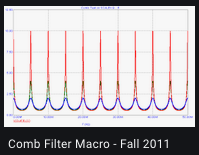That does work, but it sounds of recording in a box rather than clear tones. You might try one with folded over towels or blankets on the table. I think I’m listening to your green linoleum tabletop.
This is the formula for a Kitchen Table Sound Studio.
https://forum.audacityteam.org/t/too-compressed-rejection/52825/22
You don’t need most of that with your storage room, but note in the third picture, the table has a large doubled-over heavy furniture moving pad under the microphone. That’s part of the design. Heavy is good. A light, feathery duvet need not apply. The distortion is comb filter effects, where certain tones and harmonics get boosted and others suppressed. It gets its name from the analysis of the distortion which looks a little like a comb.

I do have second thoughts about turning you loose to start reading because if anything happens to your “one foot in the grave studio” what do you do?
You will never be able to pick up where you left off with so much marginal equipment. Quick, how would you replace your Roland? Your mystery microphone? If anything bad happens you will be straight back to first birthday; build a new studio and read it all again.
ACX makes chapter matching a really big deal and that does not leave a lot of room for fudging.
Have you read through the submission requirements? There was a thing a while back about submitting if you don’t happen to live in the US. I don’t remember what the discussion was. It’s worth a Google. Also dig through the ACX help system.
https://www.acx.com/help/acx-audio-submission-requirements/201456300
When you get rolling, you should be exporting two WAV (Microsoft) 16-bit sound files. One raw reading when you get to the end of a chapter, and then again as a chapter edit master, before you create the MP3 for ACX. Never do production directly in MP3.
Koz